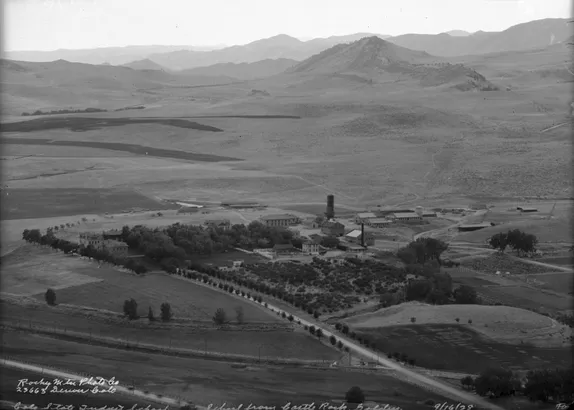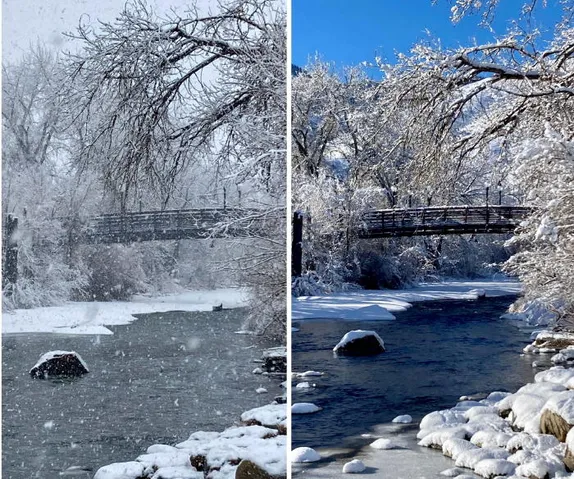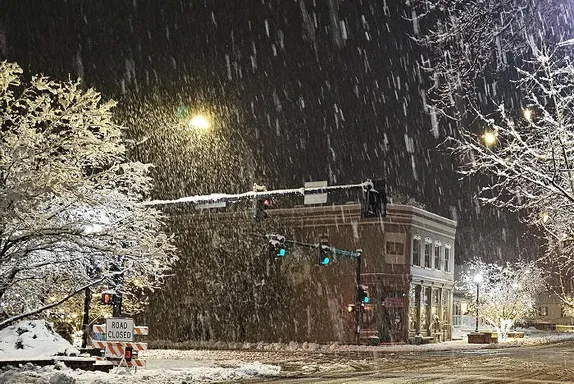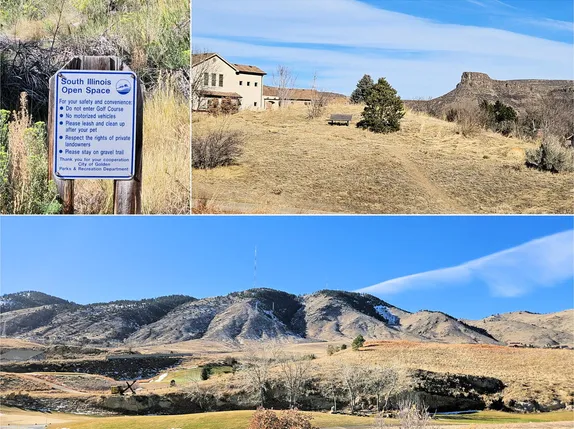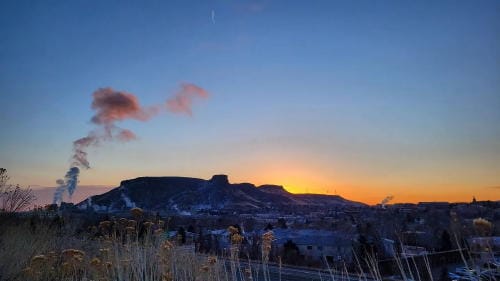
Virtual Events
6-6:55AM Cardio Lift Interval
8-8:55AM Tai Chi
8:30-9:30AM Virtual Power Training
10-10:55AM All Levels Yoga Virtual
10:15-10:45AM Preschool Time @ Golden Library
11-11:55AM Find Your Balance
3-5PM Hard Times Writing Workshop
Real World Events
9AM Golden Walks – Wednesday Morning Celebrating Life @ Golden Library
9:15-9:45AM Toddler Time @ Golden Library
10AM-3PM Aussie Bag Class @ Golden Quilt Company
4-4:50PM Ski Conditioning Class @ Golden Mill
6-7:30PM Great Decisions: Outer Space
6PM Pong Night @ Coda Brewing
6-8PM Re-imaging Backcountry Skiing
6-8:30PM Community Sustainability Advisory Board @ City Hall
The Sustainability Board will meet in the Public Works building, at 1445 10th Street (map). This means that the meeting will not be broadcast live. They will post a recording later in the week. Staff will update them on greenhouse gas emissions, the graywater pilot program, and our water resiliency plans. The Board will review a draft RFP for building a community solar garden. They will discuss a plan to make the City’s fleet of vehicles all-electric. They will consider the CoorsTek proposal for their downtown site (7th to 10th/Washington to Ford) and decide whether they want to submit any Sustainability-related comments. The meeting packet contains an analysis by the City’s Sustainability Manager regarding those sustainability elements.
6:30PM Uncorked at The Eddy – Wine Tasting & Education Series @ The Eddy Taproom & Hotel
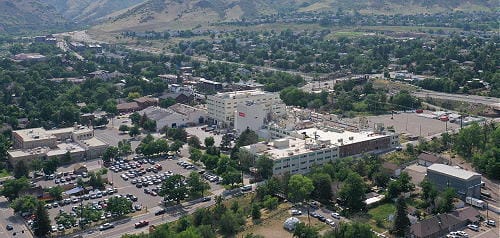
6:30PM Planning Commission – Special Meeting for CoorsTek Application
The Planning Commission began a discussion about the CoorsTek property at their February 2nd meeting. The owners are asking that the property be rezoned as a PUD (Planned Unit Development).
Traditionally, a piece of property is zoned for some specific use–agriculture, residential, manufacturing, commercial, etc. The current trend is to build for mixed uses–typically stores or restaurants at street level and offices or apartments upstairs. Our new zoning code will include several options for mixed use developments; however, CoorsTek wants to do something different. They want to call the entire piece of land a “district.” Rather than providing each new building with the things a new building normally requires, such as parking and a certain amount of open space, they want all of the buildings to share those amenities. For example, there might be one garage providing parking for all of the buildings, or one central plaza providing shared open space. They want to define their own zoning rules.
PUDs have been common in developments built in the past 50 years. In fact, about half of Golden’s residential property is zoned “PUD.” It’s one of the reasons we’ve been writing a new zoning code: we wanted to come up with a set of rules that would apply to everyone, rather than every developer defining their own rules.
Nonetheless, the community has been willing to listen to what CoorsTek has in mind. I’ve listened to many people discussing this project, and the general feeling is one of cautious optimism. “We could do worse than having CoorsTek wanting to build a showcase.”
The February 2nd meeting was turbulent. The Commissioners had many questions that the meeting packet didn’t answer, and the CoorsTek project manager was frustrated because he never got a chance to speak. As it turned out, the meeting packet was missing a significant document that would have answered some of the questions.
The Commission had received several comments via email, and the public was clearly concerned about anticipated increases in traffic along Washington, 10th, and Ford. They pointed out that the traffic study had been done at relatively quiet times–May and October–and so didn’t include the summer tubing crowd. They were also nervous about the plan to provide less parking than our current codes require.
The February 2nd comments included some concerns about the housing components of the plan. Some portion of the housing would be “affordable” to middle income residents–but would it be enough? This week’s packet includes more comments on the topic: Why will the housing be affordable for only 30 years–what happens after that? The proposed hotel will employ many low income people–housing should be built for low income people. They shouldn’t have the option of providing the low income housing somewhere off-site–they should provide it right there, where the new jobs will be. City Staff suggested that the low income people could be housed on Colfax or South Golden Road.
Even with the new information in tonight’s packet, a lot of details remain undefined. The Planning Commission will continue to wade through their questions tonight, and hopefully the applicant (CoorsTek) will have a chance to speak. This will be the “trust, but verify” stage.
I found the last meeting fascinating and look forward to watching tonight. If you’ve ever considered watching a public meeting, this would be a good one.
Public Comments – This was valid on Feb 2nd, so I’m assuming it’s still true today.
Written comments will be accepted until 1PM, to allow Planning Commission time to review before the meeting. Email your comments to planningcommission@cityofgolden.net.
Members of the public wishing to provide live public comment during the virtual meeting can pre-register by 5PM today using this link. You will receive a link to the meeting after you have been approved. When joining, click “run a temporary application”. You do not need to download anything.
Live Music
6PM Live Music @ Miners Saloon
6:30PM Open Jam/Mic at Over Yonder Brewing
Golden History Moment
Heart and Soul of Golden
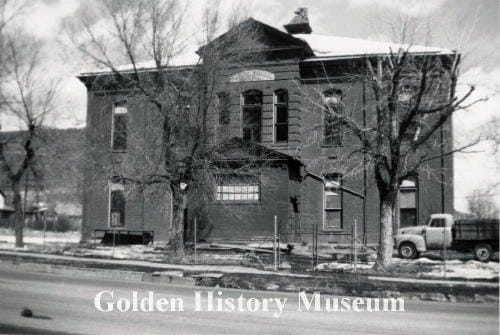
Golden’s History Museum began as a WPA (Works Progress Administration) project in 1938. Its original home was in the old North School, at 6th and Washington. That school had been closed when the Central School (later called Mitchell Elementary) opened in 1936. The County purchased it for use as a “Courthouse Annex,” and assigned one of the former classrooms for use as a Jefferson County Museum.
The primary goal of the WPA was to provide employment for people, so the initial allocation of $6,880 was expressed as “work for 17 people for six months.”
County residents were generous in giving or loaning both archives and artifacts to the new museum. As the May 4, 1939 Transcript reported, “There is scarcely a family in the county which has not some article of this kind stored in the basement, attic, or out in the garage in danger of being lost or destroyed.” Staff was kept busy cataloging and arranging the incoming stream of relics. They soon found that they had more artifacts than could be exhibited at any given time.
Because the museum was attracting so much interest (and so many artifacts), they were granted an additional $8,400 in May of 1939. This grant also encompassed “preparation of display materials.”
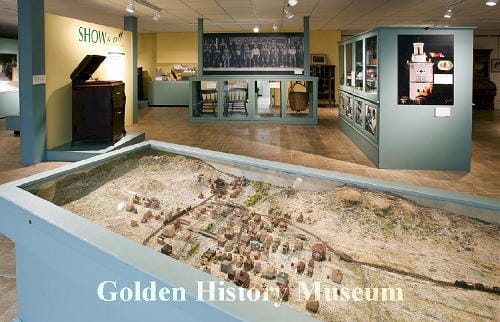
In addition to the collection of artifacts, the project had a staff artist, who painted portraits (based on old photos) of some of the county’s early residents. She also created a series of dioramas, some of which are still in the museum’s collection. WPA staff also built tables and display cases.
According to a 1953 Transcript article, the total allocated to the museum by the various Roosevelt-era agencies was $75,000. The same article said that at one time “some ten or twelve persons” were working at the museum.
Most of the WPA projects saw cutbacks as time went by, and the museum was no exception. It was closed through parts of 1940 and 1941. The County tried to keep it open a few hours a week by connecting it with a rural circulating library and having a single staff person in charge of both programs.
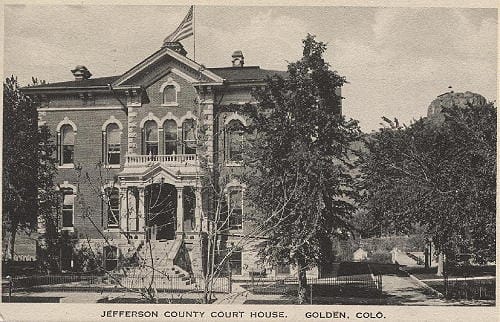
Once World War II began, the museum was closed for the duration. It remained closed until 1953, when the local chapter of the Daughters of the American Revolution offered to assume responsibility for managing it. The county had built a new courthouse by then, so the museum was moved from the North School into a larger space–the former district courtroom in the old (1878) courthouse.

The City of Golden acquired the old courthouse from the county in 1957, with the stipulation that the City would maintain the museum. The City decided to sell the old courthouse and build a new city hall and municipal building. Space for the museum was included in the plans for the new buildings.
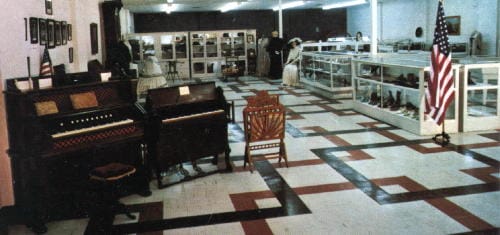
The Daughters of the American Revolution continued to manage the museum for more than 50 years–first inside the municipal building and later in the building next door, the former library. During that time, it was called the Golden Pioneer Museum.
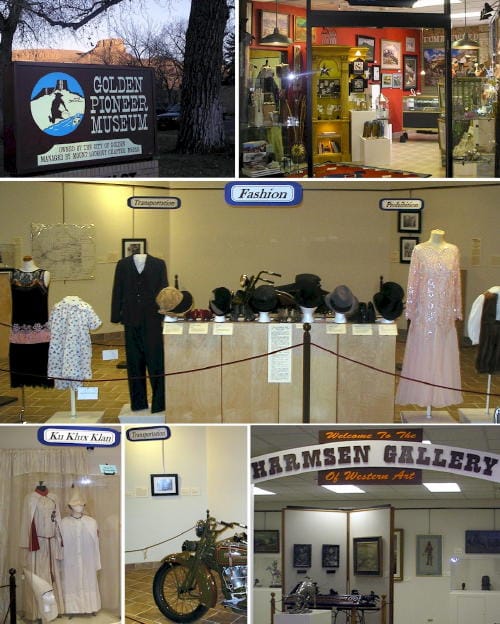
The City took over management of the museum in 2007. It is now called the Golden History Museum. A full-time staff operates the Museum and the Clear Creek History Park, manages the City’s collections, runs a lecture series, and offers summer camps for schoolchildren.
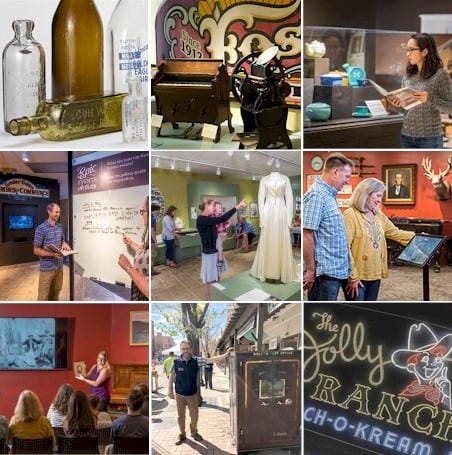
The Golden History Museum is open Weds. through Saturday, 10AM-4PM. Admission is free. The Golden History Park is open every day, sunup to sundown, with no admission charge. The Museum is currently asking for public input on their strategic plan, so please take their survey!
Thanks to the Golden History Museum for providing the online cache of historic Transcripts, and to the Golden Transcript for documenting our history since 1866.

